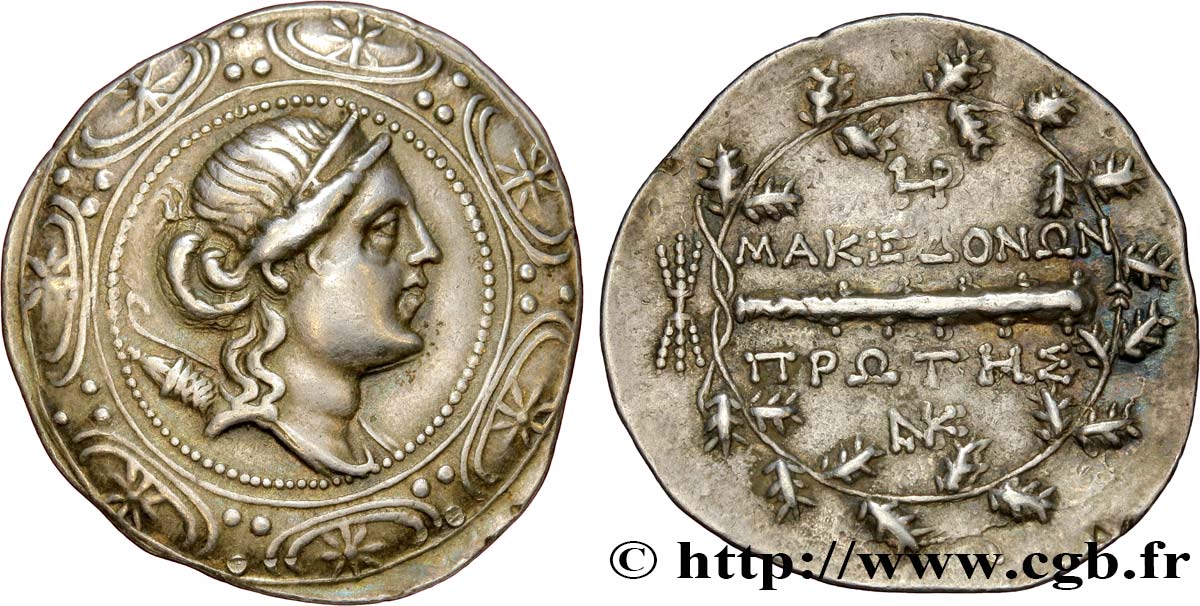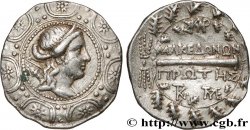bgr_384390 - MACEDONIA - AMPHIPOLIS Tétradrachme stéphanophore
Not available.
Item sold on our e-shop (2017)
Price : 850.00 €
Item sold on our e-shop (2017)
Price : 850.00 €
Type : Tétradrachme stéphanophore
Date: c. 150 AC.
Mint name / Town : Amphipolis, Macédoine
Metal : silver
Diameter : 35,5 mm
Orientation dies : 3 h.
Weight : 16,89 g.
Coments on the condition:
Exemplaire de qualité exceptionnelle sur un flan extrêmement large, parfaitement centré des deux côtés. Au droit le bouclier est complet avec un très beau buste d’Artémis. Frappe un peu molle au revers, légèrement tréflée. Jolie patine de collection ancienne avec des reflets dorés
Catalogue references :
Obverse
Obverse legend : ANÉPIGRAPHE.
Obverse description : Buste diadémé et drapé d'Artémis Tauropolos à droite, l'arc et le carquois sur l'épaule, placé au centre d'un bouclier macédonien orné d'étoiles.
Reverse
Reverse description : Légende de chaque côté d'une massue ; au-dessus, un monogramme.
Reverse legend : MAKEDONWN // PROTHS// (HR)/ (ANK).
Reverse translation : (Macédoine première).
Commentary
Ce type avec ces monogrammes semble beaucoup plus rare. C’est la première fois que nous le proposons à la vente.








 Report a mistake
Report a mistake Print the page
Print the page Share my selection
Share my selection Ask a question
Ask a question Consign / sell
Consign / sell
 Full data
Full data









